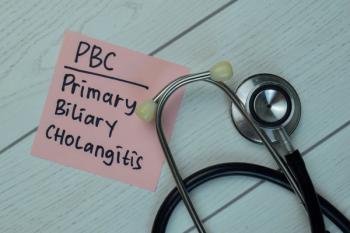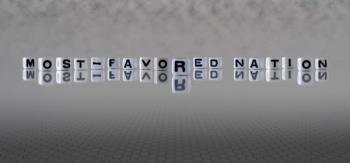
- MHE June 2020 Issue
- Volume 30
- Issue 6
CT Scans for Diagnosing COVID-19? Not So Much.
Early studies from China suggested that CT scans of the lungs could be used to diagnose the disease. But as PCR tests became available, radiology groups said CT scans should be used more sparingly and in confirmed cases.
Early data from China suggested that CT scans of the lungs might be used to diagnose COVID-19. Recommendations to use CT scans came from both published and anecdotal reports, notes Harold Litt, M.D., Ph.D., division chief of cardiothoracic imaging at Penn Medicine in Philadelphia. “Colleagues of mine (in China) told me what their policies were. They were scanning everyone who showed up at the hospital because at that moment, they didn’t really know what they were dealing with and didn’t have adequate testing.”
Several studies conducted early in the pandemic in China compared noncontrast chest CT scans to real-time polymerase chain reaction (RT-PCR) swab testing for diagnosing COVID-19. Published online in mid-February in Radiology, a study by Yicheng Fang, of Affiliated Taizhou Hospital of Wenzhou Medical University, and colleagues found chest CT 98% sensitive for COVID-19 compared with 71% for RT-PCR. The authors suggested using CT chest screening, especially if RT-PCR testing was negative.
A study conducted by Tao Ai, of Tongji Hospital in Wuhan, and colleagues also published online in February in Radiology and found chest CT sensitivity at 97% for those with positive RT-PCR results. In patients with negative RT-PCR tests, 75% had positive CT scans. Authors recommended CT as a primary COVID-19 diagnostic tool.
But as COVID-19 spread beyond China, RT-PCR testing improved, and researchers had more time to compare those initial studies with practices in other countries. The availability of RT-PCR is still an issue in the U.S., but recommendations for using CT scans to diagnose COVID-19 haven’t been adopted by major medical organizations and societies.
The American College of Radiology noted in a March 11 statement that CT scans should not be used to screen for COVID-19 or as a first-line test to diagnose the disease and that they should be used “sparingly and reserved for hospitalized, symptomatic patients with specific clinical indications for CT.” The Society of Thoracic Radiology and American Society of Emergency Radiology also do not recommend routine CT screening for COVID-19. Their joint statement said chest CT scans can be restricted to patients who test positive for COVID-19 and are suspected of having complications involving the lungs.
But the Fleischner Society, an international, multidisciplinary thoracic radiology society, took a more nuanced stance and included CT scans on its decision trees. The Fleischner group recommended against CT scans (and chest X-rays) for screening COVID-19 in patients with no or mild symptoms unless they show “worsening respiratory symptoms,” but recommended imaging - either CT scans or chest X-rays - for people with “moderate to severe features” of COVID-19. The society’s recommendations say that chest X-rays are of little value early in disease but have a role in more advanced disease.
Litt and other radiologists also see problems with study design, biases and selection criteria used in some of Chinese CT scan studies.
Clinicians at the hospitals in China scanned any symptomatic patient, with little understanding of where patients are in the disease process, says Litt. In the U.S., patients with mild to moderate symptoms have been told to stay home unless they have trouble breathing. Litt also notes that the study showing 71% sensitivity for RT-PCR testing used throat swabs. “We know [throat swabs] will miss quite a few positive patients compared to nasopharyngeal swabs,” says Litt, who also questions the high sensitivity rate of CT scans, adding that, “98% sensitivity is too high for anything in medicine.”
In addition, American College of Radiology says specificity is a problem with CT scans for COVID-19 because results can overlap with findings for pneumonia and lung issues stemming from other sorts of infections, including influenza. Moreover, says Litt, “we need to make a distinction between (the) coronavirus infection and COVID-19 pneumonia” because people can test positive for COVID-19 but haven’t developed pneumonia.
Expense is another consideration. It is impossible to put a single price on a CT scan; it is going to vary depending on the payer. It’s not negligible, though, and claims for CT scans range from several hundred dollars to several thousand.
The availability of CT scanners hasn’t been an issue at most U.S. facilities, says Litt, because of canceled or postponed elective procedures and other ordinary medical care. What is an issue is that scanning patients increases the likelihood of staff members contracting the virus. “We’ve instituted universal cleaning protocols because we don’t know who has the [undetected COVID-19],” says Litt.
Then there’s the incidental finding, a common problem with imaging tests. Determining how to report and share them led to Litt and his colleagues publishing a Radiological Society of North America expert consensus statement on incidental COVID-19 findings. The statement proposed categorizing them into one of four categories: typical (of COVID-19), indeterminate, atypical or negative.
“This specific question of, ‘Is this abnormality reflective of COVID-19 pneumonia or something else?’ is going to be one with us for a while,” notes Litt, “and viral testing will be the way to resolve that.”
Deborah Abrams Kaplan covers medical and practice management topics.
Articles in this issue
over 5 years ago
5 Developments Changing the CAR-T Landscapeover 5 years ago
9 Ways to Show Strong Leadership During the COVID-19 Outbreakover 5 years ago
Another Consequence of COVID-19: A Worsening of Drug Shortagesover 5 years ago
4 Ways PBMs are Changingover 5 years ago
Covid-19 Hit: Picking Up the Pieces of American Healthcareover 5 years ago
An Update on COVID-19 Vaccine DevelopmentNewsletter
Get the latest industry news, event updates, and more from Managed healthcare Executive.

















































